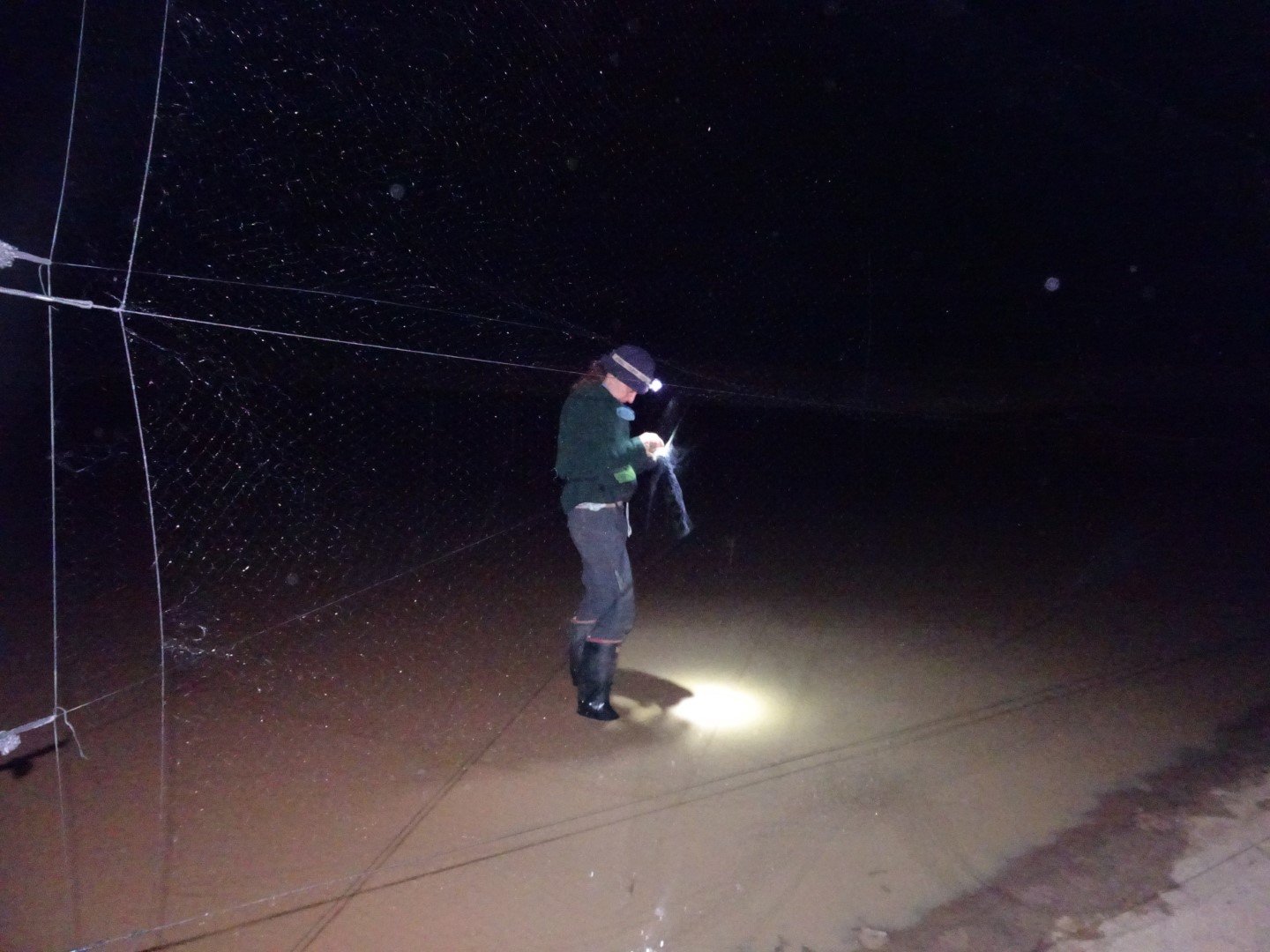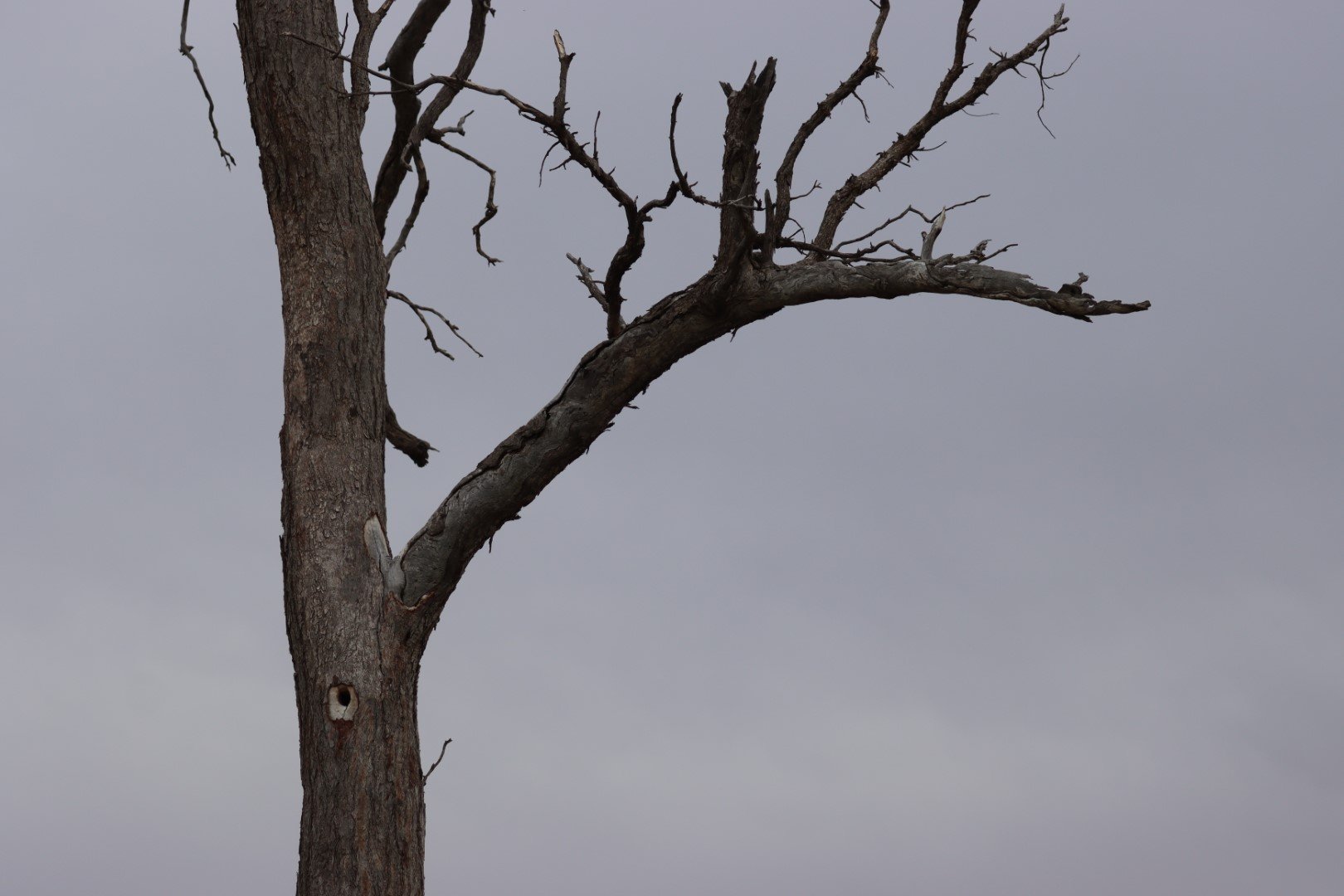Bats in the Mallee
There are bats out there, but what do they look like …?
I am a big fan of bats. Australian microbats can consume half their body weight in insects in a single night. They love mosquitos. Yay!
Back in November 2019, we had a bat detector (anabat) set up on Raakajlim, just for one night. The device recorded calls from at least five different species of microbats, but I was left wondering what do these elusive creatures look like?
So, when I heard there was bat trapping happening at Nowingi, near Hattah-Kulkyne National Park, I couldn’t get my volunteering hand up quickly enough.
A bat detector (anabat) on Raakajlim
Bat data collection tools - the Echo Meter is the orange thing plugged into the iPhone.
Identifying bats from their calls
Many bats can be identified from their high-frequency echolocation calls. These calls are outside the range that we mere humans can hear.
The bat researchers use full-spectrum, ultrasonic bat detectors to record calls. At Nowingi we were collecting calls to build a reference library of bat calls for the Mallee. We were using an Echo Meter Touch Pro. This is a cool device that plugs into your iPhone to visualise the call spectrogram, as well as record the bat calls.
So, we caught these cute little bats, stuck teeny-tiny glow sticks on them and then followed them around with bat detectors to record their call. Yep, running around at night in the dark is always a recipe for fun! The glow sticks fall off after a few minutes so there's a bit of pressure to capture the call!
South-eastern Long-eared Bat (Nyctophilus corbeni)
Nowingi State Forest holds the only known Victorian population of the nationally threatened South-eastern Long-eared Bat (SLEB). Genetic materials collected to better understand the genetic diversity of the population revealed ... good news … unexpectedly high levels of genetic diversity! However, the mark-recapture analysis suggested there may be fewer than 50 individuals in the Nowingi population. That is critically low abundance. Gulp.
SLEBs are tricky to monitor because at the moment they can’t be distinguished by their calls. We have Lesser and South-eastern Long-eared Bats in this part of the Mallee, and Gould’s Long-eared Bats along the river in northwest Victoria. They all sound pretty similar. The researchers are searching for some unique characteristics to distinguish the echolocation calls of Long-eared Bats.
Mist net set up over the dam
A harp trap among the Belah trees
The bats get tangled in the fine mist net and it is a quick slosh into the dam in gumboots to free them.
How do you trap a bat?
At Nowingi, bat trapping involves harp traps set up among the trees and mist nets set up over the dam. The dam is the only water point for quite a distance so is popular with the locals.
In 2021, we caught lots of Gould’s Wattled Bats, Lesser Long-eared Bats, Inland Broad-nosed Bats, Little Forest Bats, and Inland and Southern Freetail Bats. In 2022, I added Chocolate Wattled Bat to the list.
I’ve seen microbats before, flitting about in the sky but rarely up close. Once, I saw a Gould’s Wattled Bat which had headed for some shade on a very hot day and was on a windowsill. At the time I thought the Gould’s was a tiny, delicate thing. Turns out Gould’s is actually a very chunky microbat weighing in at around 15g. In comparison, the Little Forest Bat was only just over 3g and appeared more like a moth than a bat.
Gould’s Wattled Bat, a chunky common species up to 15g
Chocolate Wattled Bat hoping for a cuddle
Lesser Long-eared Bat, the most common Long-ear
Little Forest Bat weighing in at 3g!
Now, let me check your penis …
My favorites are the Ozimops (Freetail bats). Ozimops look similar and the Inland and Southern species are best distinguished by … their penis size. Yep, Little Dick (O. petersi) and Big Dick (O. planiceps). Despite weighing only 10g, Ozimops have an absolute conviction that they are terrifying. They tried to scare us off with a fierce display of tiny teeth and some indignant, but admittedly pretty loud, squeaking. We were not perturbed, and the little cuties soon relaxed, sitting calmly and placidly in the hand, peering around with their tiny eyes.
Ozimops Freetail Bat
(Not so) terrifying Ozimops
But I can hear the call of this bat !?
One of the most lovely things about having the opportunity to go bat trapping with people like Dr Lindy Lumsden is you can ask all sorts of dopey questions, like … “There’s this bat that looks really big and flies around at dusk. Sometimes I can hear it chirping. What would that be?” KIndly, Lindy responded “That’s the White-striped Freetail bat. Its echolocation calls are audible to humans.” And it is big - a wingspan of 40 cm! Thanks, Lindy! Mystery solved.
Dead but still useful. An old Pine (Callitris gracilis) with hollows.
Bats need hollow trees
Hollow trees are important, who would have thought it? Lindy’s research (1), gathered by radio-tracking the movement of more than 70 Lesser Long-eared Bats and Gould’s Wattled Bats, highlights this. The bats in their study changed their roost site every couple of days. However, they roosted within a discrete area, consistently returning to their chosen spot even after foraging up to 12 km distant!
Researchers concluded: “This roosting behaviour highlights three important requirements: (1) a relatively large overall number of hollows to support a population; (2) discrete roost areas with a high density of suitable hollows in close proximity; and (3) a range of hollow types to provide the specialised roosts required, particularly for breeding.”
Arthur Rylah Institute bat research at Nowingi is carried out under Wildlife Act permit 10008640 and current animal ethics approvals. Many thanks to Dr. Lindy Lumsden and Amanda Bush for allowing me to volunteer with them.
Further information
Lumsden, et al. (2020) Roosting behaviour and the tree-hollow requirements of bats: insights from the lesser long-eared bat (Nyctophilus geoffroyi) and Gould’s wattled bat (Chalinolobus gouldii) in south-eastern Australia
You can read more about ARI’s research here: Discovering the secrets of Victoria’s small bats
Check out this little video about trapping bats in the Mallee, produced by the Mallee CMA
International Bat Appreciation Day - April 17th every year - send your love to these fascinating creatures!












